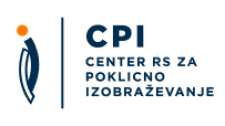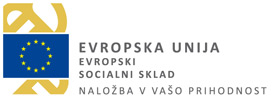Primary tabs
Magister inženir telekomunikacij/ magistrica inženirka telekomunikacij
Selected qualifications
| Name of qualification | Name of qualification: Magister inženir telekomunikacij/ magistrica inženirka telekomunikacijAdd to comparison |
|---|---|
| Translated title (no legal status) | Translated title: Master of Science in telecommunications engineering |
| Type of qualification | Type of qualification: Master’s degree |
| Category of qualification | Category of qualification: Educational Qualification |
| Type of education | Type of education: Master's education |
| Duration |
Duration of education:
2 years
|
| Credits | Credits: 120 credits |
| Admission requirements |
Entry conditions:
Admission requirements Enrolment in the second-cycle programme Telecommunications is open to candidates who have completed:
|
| ISCED field |
Field:
Engineering, manufacturing and construction
|
| ISCED subfield | subfield: electronics and automation |
| Qualification level |
SQF Level:
SQF 8 |
The qualification holder will be able to:
(general competences)
- autonomously find sources of information and use them critically,
- integrate technical knowledge, methods, skills and the use of engineering tools to autonomously resolve technical problems in known or altered circumstances,
- apply abstract thinking and the integration of acquired knowledge to autonomously develop innovative ideas and solutions,
- carry out research in connection with problems from the field of telecommunications and related fields,
- work autonomously in multi-disciplinary teams,
- manage complex systems and take decisions supported by arguments,
- communicate independently using various media and for various purposes such as the writing of project documentation, public oral presentations in a foreign language, etc.,
- demonstrate awareness of the need for in-depth knowledge of the subject and systematic professional work and research in order to achieve progress in any field.
(subject-specific competences)
- demonstrate thorough familiarity with and understanding of the principles of the transfer of various types of information (data, speech, images, etc.),
- demonstrate in-depth professional knowledge of telecommunications systems and various types of networks and the services that can be offered via them,
- work autonomously in the selection, design and development of selected types of hardware (e.g. transmission media, communication electronic circuits, transmission systems, network hubs, terminal equipment) and/or software (e.g. communication protocols, image and speech processing, user services and applications) needed in telecommunications,
- autonomously apply principles, methods and tools for analysis, planning and/or management in the above fields of telecommunications,
- keep abreast of and demonstrate understanding of new developments in principles, technological approaches, devices and services in the field of communication technologies; demonstrate the ability to use them and make their own innovative research and development contributions,
- demonstrate familiarity with the most important current technical or scientific literature for a selected narrow field of communication technologies,
- work independently in industry and enterprise.
Students' knowledge is assessed by means of practical exercises and seminar papers, and also via products, projects, performances, services, etc. and by examinations. Examination performance is scored as follows: 10 (excellent); 9 (very good: above-average knowledge but with some mistakes); 8 (very good: solid results); 7 (good); 6 (adequate: knowledge satisfies minimum criteria); 5–1 (inadequate). In order to pass an examination, a candidate must achieve a grade between adequate (6) and excellent (10).
In order to progress to the second year, students must have passed first-year examinations totalling at least 42 ECTS credits.
Third-cycle doctoral study programmes (SQF level 10)
In order to complete the programme, students must complete all course units in all subjects in which they have enrolled, and write and defend a master's thesis.
Faculty of Electrical Engineering and Computer Science, University of Maribor
URL
Awarding body URL:Upcoming event
International Conference: 10 years of Slovenian Qualifications Framework
International Conference: 10 years of Slovenian Qualifications Framework Brdo Congress Centre, Predoslje 39, 4000...
© Center RS za poklicno izobraževanje, 2018. All rights reserved
Sitemap General legal notice Cookie Policy Production: ENKI






